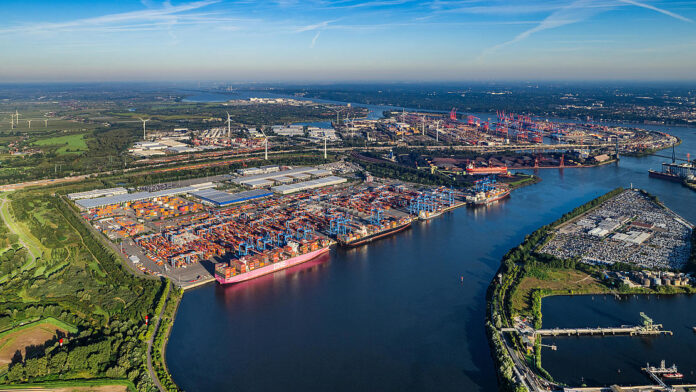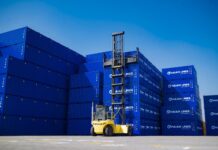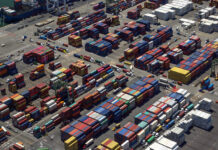
The Port of Hamburg recorded robust growth in container throughput during the first half of 2025, despite subdued global economic conditions and ongoing geopolitical tensions.
The port regained market share against its two major Western European competitors, driven largely by strong gains in the container segment.
From January to June 2025, seaborne cargo throughput rose 3.6 percent year-on-year to 57.8 million tonnes. Container traffic was the main growth driver, climbing 9.3 percent to 4.2 million TEU. Imports surged by 11.6%, while exports increased by 6.9%. In tonnage terms, containerised general cargo throughput expanded 6.8 percent to 41.2 million tonnes.
Axel Mattern, CEO of Port of Hamburg Marketing commented that compared with rival ports, Hamburg is setting a positive example and winning back market share.
While containers provided momentum, other cargo segments declined slightly.
Conventional general cargo fell 3.7 percent to 0.6 million tonnes, while bulk cargo dropped 3.8% to 16.0 million tonnes. Within bulk, liquid cargo rose 10.3% to 4.7 million tonnes, but grabbable cargo decreased 6.6% to 8.5 million tonnes, and agricultural goods slid 13.9% to 2.9 million tonnes.
The fall was driven by weaker demand for coal and ore, along with a sharp drop in grain exports (-80.8 percent to 852,000 tonnes), partly offset by higher imports of oilseed crops (+8.9 percent to 1.7 million tonnes).
The strongest container growth came from the Far East (+10.7% to 1.8 million TEU) and the Baltic Sea trade lanes (+20.8% to 734,000 TEU).
Key growth markets included Malaysia (+93.2% to 169,000 TEU), India (+41.6% to 137,000 TEU), and China (+10.5% to 1.2 million TEU).
Trade with Baltic partners also surged, particularly with Denmark (+36.0% to 98,000 TEU), Finland (+20.1% to 125,000 TEU), and Poland (+28.8% to 182,000 TEU). Among major partners, only the US registered a decline (-19.3% to 275,000 TEU), reflecting ongoing trade policy disruptions.
Ship calls also increased modestly, with particularly strong growth in the deployment of large vessels. Calls by ships over 10,000 TEU rose 51.6 percent to 285, while those exceeding 24,000 TEU jumped 29.6& to 127 compared with the first half of 2024.
The positive trend extended to hinterland transport and transhipment. Container hinterland traffic grew 2.2% to 2.6 million TEU, while transhipment volumes surged 23.8% to 1.6 million TEU.
Friedrich Stuhrmann, CCO of Hamburg Port Authority highlighted recent infrastructure projects, including wider ship passage near Wedel and the expansion of the Waltershofer turning circle, as key investments to secure future growth.





